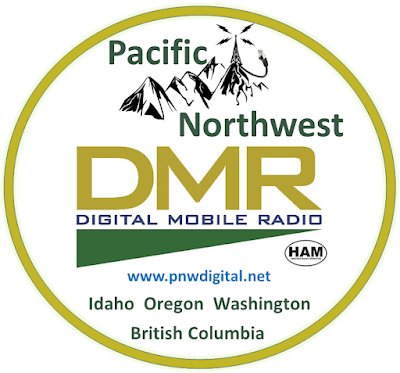Digital Mobile Radio (DMR)
Digital Mobile Radio (DMR) is an international standard that has been defined for two-way radios. PNWDigital (https://pnwdigital.net/) is an open Amateur Radio IPSC Network dedicated to maximizing DMR use in the Pacific Northwest using MotoTRBO repeaters and c-Bridges. All repeaters and networking are privately owned and funded solely by a handful of our members. The PNW DMR network is a system of open use DMR repeaters located in the Pacific Northwest. The PNW c-Bridge currently supports 35 plus MotoTRBO repeaters with 24 in Washington, 10 in Oregon and 1 in Idaho. They also have deployed several c-Bridges, an echo server and 8 MMDVM servers for additional repeater and hotSpot support. Where possible, the repeaters are IP linked via HamWAN, a private RF based IP backbone network. Some repeaters have dual IP sources with failover protection.
BridgeCom Systems, Inc. is a major supplier of DMR radios. They have a short YouTube video "What is Digital Mobile Radio (DMR)? A Quick Introduction to DMR" (https://www.youtube.com/watch?v=-3HGGieNUx8) that briefly explains what DMR is.
If you are a licensed Amateur (Ham) Radio Operator, it is worth obtaining your DMR ID (it's free) and getting a DMR capable radio. Here in Cascadia DMR is very popular, with a network of repeaters that can be accessed from many locations in BC, ID, OR, and WA. One of the major advantages of accessing the DMR network is that it gives you regional, national, and world-wide access with just a hand-held radio as long as you can access a repeater or hotspot.
But what happens if 'the Internet goes down'? While the likelihood of the Internet going down is extremely unlikely, your local Internet access could certainly be limited following a major disaster. Having DMR access would allow you to connect with friends and family (if they are licensed Hams) over the DMR network once you moved outside of the disaster area. But even within a disaster area, DMR can be used through a local only repeater (not linked to the network), or in simplex mode where you connect directly to another radio / user.
A very useful feature of DMR is the ability to send text messages between radios (and in some cases through repeaters). Leaving a radio tuned to a DMR simplex frequency allows messages to be received at a station when the operator is away from the radio (just like text messages over the cellular network).
Cascadia Survivalist recommends that, if you are a licensed Ham, you get DMR access. (If you don't have your ham radio license yet, consider getting it.) While DMR can seem a bit complex when you first look at it, overall it is fairly easy to get started, and groups like PNWDigital and BridgeCom Systems offer assistance if you need it.
The "Amateur Radio Guide to Digital Mobile Radio (DMR)" (https://www.raqi.ca/~ve2rae/dmr/Amateur_Radio_Guide_to_DMR.pdf) can be downloaded from Radio Amateur du Québec Inc.
A list of DMR repeaters in Cascadia can be found here. (https://pnwdigital.net/repeaters.php)

.png)


Comments
Post a Comment